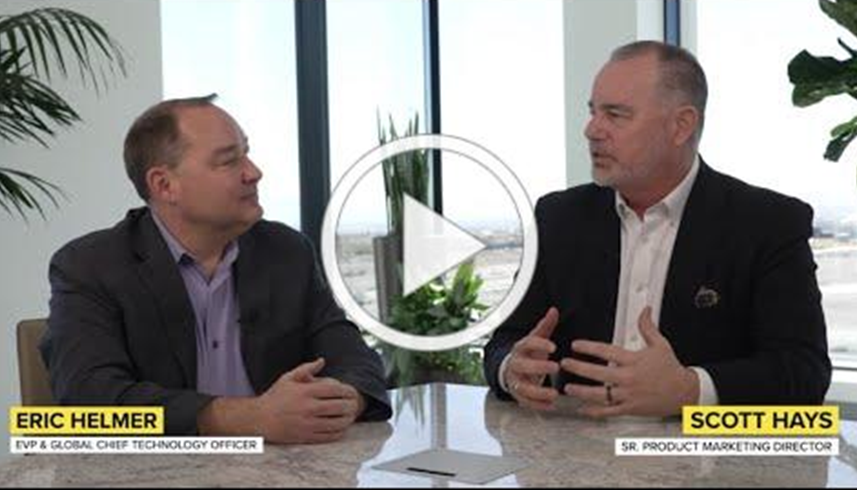TAKE NOTE (Insights and Emerging Technology)

The House Appropriations Committee recently advanced a fiscal year 2026 funding bill that would slash federal discretionary spending by $45 billion below FY2025 levels—excluding defense, homeland security, and veterans affairs. Civilian agencies like the Environmental Protection Agency (EPA) and Bureau of Alcohol, Tobacco, Firearms and Explosives (ATF) would face significant cuts of 23% and 26%, respectively. While national security spending is mostly protected, the bill reflects an aggressive posture toward reshaping the federal budget and scaling back the administrative state
Political Maneuvering and Broader Trends
These cuts come alongside the Rescissions Act of 2025, which clawed back $9.4 billion in previously appropriated funds—much of it from foreign aid, climate programs, and public broadcasting, including a full de-funding of NPR and PBS. Critics argue that such sweeping reductions undermine essential public services, including disaster preparedness, scientific research, and cybersecurity infrastructure. Supporters say the moves are necessary to rein in federal spending and realign national priorities around defense and homeland protection
What It Means for DoD Contractors
Defense and veterans spending remain relatively insulated, but cuts across civilian tech, science, and research agencies will ripple into defense-adjacent work. Giants System Integrators rely heavily on government contracts from agencies like the Departments of Defense, Homeland Security (e.g., CISA cyber pilot programs), Veterans Affairs, and National Institutes of Standards & Technology. Cutting these budgets may slow or reduce new technology procurement, cybersecurity efforts, and infrastructure modernization projects—areas where those firms play key roles. Even if direct DoD spending holds steady, the broader government cutback strains ecosystems that help develop mission-critical interoperable systems, prototypes, and dual-use tech.
As federal R&D, cybersecurity, and environmental services shrink, DoD contractors may face slimmer pipelines and tighter competition. Expect future bidding dynamics to shift—more consolidation around core defense services but fewer opportunities in areas like civilian cybersecurity, data science, and resilience contracts.
Shifting Opportunity Landscape
In this constrained environment, contractors may see a consolidation of demand around mission-critical defense capabilities and fewer opportunities for growth in adjacent areas such as civilian cybersecurity, environmental analytics, and dual-use R&D. Firms will need to sharpen their value propositions for defense clients while finding innovative ways to stretch existing civilian contracts. Expect increased competition, more aggressive teaming strategies, and possibly a push for modular, cost-effective solutions as agencies look to do more with less. The bottom line: defense is still a priority, but the surrounding ecosystem is shrinking—and contractors must adapt.
Read more at Federal News Radio link below
UNDER DEVELOPMENT (Insights for Developers)
ERP-First: The Evolution of SAP Customization

Intro
You’ve probably been hearing a lot about something called the “ERP-First” approach. Maybe it came up in a transformation workshop, a roadmap meeting, or an SAP strategy session. You might be wondering—is this just another buzzword, or does it actually signal a real shift in how organizations should think about their enterprise systems?
On the surface, “ERP-First” might sound like something we’ve all heard before. After all, hasn’t ERP always been central to business operations? Wasn’t the whole idea of implementing SAP back in the day to put ERP at the heart of your company?
Yes—but there’s more to it now…
ERP-First isn’t about going back to basics or undoing what we’ve already learned. It’s about reimagining the role of ERP in a modern, cloud-based, innovation-driven enterprise. It builds on the foundational guidance that SAP introduced in the 1990s—“fit the standard, don’t customize”—but extends it with the flexibility, composability, and technical maturity that today’s platforms offer.
In this blog, we’ll walk through the historical context that shaped SAP’s original no-customization philosophy, explore how today’s technology enables a cleaner and more extensible ERP landscape, and explain exactly what ERP-First means—and doesn’t mean—in 2025 and beyond. Whether you’re running SAP ECC, migrating to S/4HANA, or just trying to future-proof your digital architecture, this article will help you understand how ERP-First fits into the next phase of enterprise transformation.
In 1994, SAP introduced R/3 to the North American market and brought with it more than just enterprise software. It introduced a doctrine that shaped how organizations approached business transformation. That doctrine was clear, strict, and far-reaching: fit the standard, do not customize. SAP’s message to its customers was that their software embodied best practices gathered from industries around the globe. If your internal process differed, the problem wasn’t the software—it was your process.
This philosophy wasn’t arbitrary. Customizing core ERP logic was seen as the first step on a slippery slope toward complexity, cost overruns, and brittle systems. SAP preached that to future-proof your enterprise, you needed to resist the temptation to write custom code and instead embrace business process reengineering. Companies were encouraged to change their people and processes to align with SAP, not the other way around.
The appeal of SAP’s fit-to-standard approach rested on three pillars: upgradeability, cost control, and long-term maintainability. If businesses aligned themselves with SAP’s out-of-the-box functionality, they would avoid the minefield of upgrade failures and unsupported enhancements. More importantly, they could evolve with the platform as it advanced. SAP was on a continuous improvement journey, and customers that stayed close to the standard could reap the benefits of innovation without enduring massive change projects every few years.
It also created a sense of architectural discipline. Developers and consultants operated under tight constraints. The focus was on configuration, not customization. Projects emphasized blueprinting and gap analysis to identify where business processes deviated from SAP’s standard, and wherever possible, those gaps were closed by changing internal workflows rather than changing the software.
Despite SAP’s guidance, many companies gave in to customization. In some cases, regulatory needs forced their hand. In others, deeply embedded legacy processes resisted change. Sometimes, the customization was simply about user comfort—delivering screens, reports, or workflows that mimicked the familiar rather than adopting new designs.
– Dig Deeper –
SAP Joule – The AI Copilot
Q&A (Post your questions and get the answers you need)

Q. What does an ERP-First architecture look like?
A. In an ERP-First architecture is an enterprise IT strategy that places the ERP system at the center of all operations, making it the authoritative source of business processes and data. Unlike best-of-breed environments that emphasize flexibility through disparate applications, ERP-First emphasizes standardization, integration, and cloud readiness by leveraging modern ERP suites as the digital core.
At its foundation, ERP-First is driven by several principles. The ERP acts as the system of record, owning and mastering all critical business data such as financials, HR, and supply chain information. Organizations adopting this approach follow a “fit-to-standard” philosophy, minimizing customization and adhering to ERP-delivered best practices. This results in a modular, composable environment where functionality is extended through certified applications or cloud services, rather than through extensive customization. Moreover, ERP-First systems are designed to be cloud-native or cloud-ready, offering agility and continuous innovation. Integration across systems is achieved through standardized APIs and event-driven architectures, ensuring interoperability and real-time connectivity.

The architecture is organized across five key layers:
- Core ERP Platform This layer features a modern ERP suite such as SAP S/4HANA, Oracle ERP Cloud, Microsoft Dynamics 365, or Workday. These systems provide the backbone for enterprise functions like finance, HR, procurement, supply chain, and project management.
- Surround Systems and Extensions Non-core or specialized functions are addressed through pre-integrated extensions or certified partner apps. These may include SAP SuccessFactors, Ariba, Fieldglass, or similar solutions that extend ERP functionality without breaking the standard model.
- Integration Layer Middleware solutions like SAP Integration Suite, MuleSoft, or Boomi facilitate communication between the ERP and external systems. This layer employs REST APIs, OData services, and event-based messaging platforms to ensure seamless data orchestration and process integration.
- Data and Analytics Layer A centralized data platform supports real-time analytics and embedded AI/ML. Tools like SAP Analytics Cloud, Power BI, or BW/4HANA provide actionable insights, with ERP-native capabilities offering contextual reporting and performance monitoring.
- User Interface Layer The user experience is unified through responsive, role-based interfaces built on design systems like SAP Fiori or Oracle Redwood. Intelligent digital assistants, chatbots, and mobile apps further enhance usability and access.
ERP-First architecture also includes structured governance. Business process governance is dictated by the ERP’s standard model, with exceptions tightly controlled. Security is centralized and role-based, often integrated with enterprise identity platforms. Continuous integration and delivery (CI/CD) pipelines enable agile updates, especially when built on platforms like SAP BTP or Azure DevOps.
Organizations benefit from ERP-First through faster implementations, streamlined operations, improved compliance, and a robust foundation for digital innovation. Because all critical data resides in one place, AI and RPA initiatives can be more effectively deployed, driving predictive insights and automation at scale
ERP-First is particularly suitable for enterprises aiming to standardize processes across multiple business units, ensure compliance and auditability, and leverage AI and cloud innovations.
It provides a strategic foundation for scalable and future-ready digital transformation.
Cheers!



